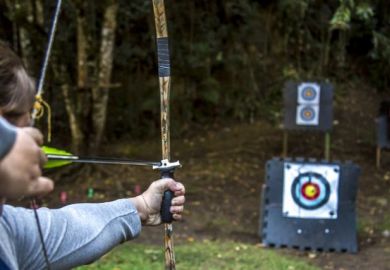The Canadian government is encouraging universities to explicitly exclude men from some of its top research grant awards, believing inequities remain so intimidating that many other candidates otherwise would not apply.
The practice involves the Canada Research Chairs, a prestigious programme through which nearly 2,300 academic scientists share C$300 million (£190 million) a year in federal funding – and to which the government has been determined to bring demographic equity.
Participating universities are not required to use a no-males hiring policy. But it is a permissible option and some universities feel pressure to try it, given that they face a 2029 deadline to raise the share of women winning Canada Research Chairs awards from the current level of 41 per cent to 51 per cent.
The no-male applicant rule is just one possible method for reaching that target and avoiding penalties, and it has been applied to only a small number of job postings over the past few years, said a spokeswoman for one of the government’s main research funding agencies.
Examples include the University of Waterloo, where an advertisement seeking an assistant professor of environment using Canada Research Chair support states: “This call is open only to qualified individuals who self-identify as women, transgender, non-binary, or two-spirit.”
The Canadian government endorses that kind of tactic, said the funding agency spokeswoman, representing the Social Sciences and Humanities Research Council of Canada. The other two main federal research funding agencies, the Canadian Institutes of Health Research and Natural Sciences and Engineering Research Council, are also part of the Canada Research Chair programme and its push to improve equity in researcher selection.
“This approach is very impactful in achieving its objectives,” the spokeswoman said of the no-male recruitment option, “as individuals who face systemic barriers in employment are more likely to apply and go through the lengthy nomination process if they know that barriers in hiring will be addressed.”
The method has animated some critics who have accused the government and participating universities of pursuing their own acts of discrimination.
One of the more outspoken is David Haskell, associate professor of digital media and journalism at Wilfrid Laurier University, who has counted its use in at least 12 professorial job searches over the past two years, at campuses that include the University of British Columbia, Western University and Dalhousie University.
“It’s madness to think that any good can ever come from discrimination,” he said in one lecture on the matter.
University leaders disagree. The University of Waterloo, said a spokesman, backs the equity targets set by the Canada Research Chair programme and supports gender-based restrictions as one element of a wider strategy to get there.
“The University of Waterloo firmly believes we must include research perspectives previously lacking in academia, to truly advance our understanding of how to solve society’s most pressing challenges,” the spokesman said.
The equity targets for 2029 set by the Canada Research Chair programme covers four federally designated groups – women, persons with disabilities, indigenous peoples, and members of visible minorities.
The current equity goals were set in 2019, and the programme has already met its mark for selecting winners among people who are visible minorities, exceeding the target share of 22 per cent of award-winners. It’s behind in the three others: the share of women needs to grow roughly another 25 per cent, while shares of the other two categories – persons with disabilities, and indigenous peoples – need to increase even more than that.
The no-males restriction on some job positions is endorsed by the Canadian Human Rights Commission, an independent federal agency that serves as the nation’s human rights watchdog.
The funding agency spokeswoman called it an especially transparent tool for combating systemic barriers and biases in recruitment and hiring, although she said she had no data on how many universities have used it.
But overall, the spokeswoman said, the campaign for equity among the Canada Research Chairs is working. “The programme is on track to achieving its 2029 targets,” she said.
Register to continue
Why register?
- Registration is free and only takes a moment
- Once registered, you can read 3 articles a month
- Sign up for our newsletter
Subscribe
Or subscribe for unlimited access to:
- Unlimited access to news, views, insights & reviews
- Digital editions
- Digital access to THE’s university and college rankings analysis
Already registered or a current subscriber?










